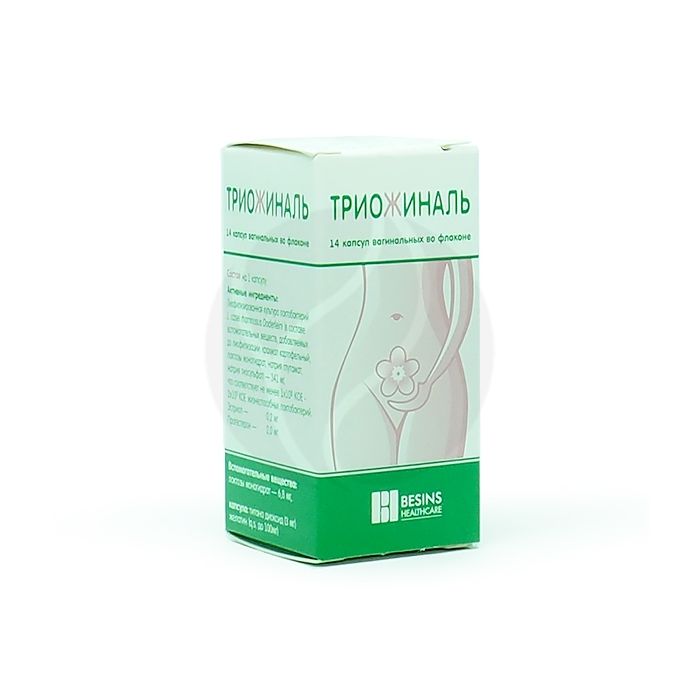Trioginal capsule, No. 14
Russian Pharmacy name:
Триожиналь капсулы, №14
atrophic vulvovaginitis due to estrogen deficiency;
preparation of postmenopausal patients for planned gynecological operations in order to prevent postoperative infectious complications (as part of complex therapy).
Intravaginally. Insert the capsule deep into the vagina, moistening it with a little water to accelerate the dissolution of the drug.
Atrophic vulvovaginitis due to estrogen deficiency: 2 caps / day for 20 days until symptoms relieve, then 1 caps / day. The dose of the drug is adjusted depending on the effect achieved.
The duration of drug therapy is determined by the doctor; the course of treatment should not be more than 3 months.
If necessary, it is possible to repeat courses of drug therapy.
Preparation of postmenopausal patients for planned gynecological operations in order to prevent postoperative complications (as part of complex therapy): 2 caps / day for 2 weeks.
| Vaginal capsules | 1 caps. |
| active substances: | |
| lyophilized culture of lactobacilli L. casei rhamnosus Doderleini (in the composition of auxiliary substances added before lyophilization: potato starch ('41% of the mass of the lyophilisate), lactose monohydrate (' 20.6% of the mass of the lyophilisate), sodium glutamate ('4.5% from the mass of the lyophilisate), sodium thiosulfate ('26.8% of the mass of the lyophilisate) - 341 mg, which corresponds to at least 1 ? 108 - 2 ? 109 CFU of viable lactobacilli | |
| estriol | 0.2 mg |
| progesterone | 2 mg |
| excipients: lactose monohydrate - 6.8 mg | |
| capsule: titanium dioxide - 3 mg, gelatin - qs up to 100 mg |
hypersensitivity to the drug or any of the components of the drug;
established or suspected breast cancer;
estrogen- or progesterone-dependent malignant neoplasms or suspicion of them (including endometrial cancer);
bleeding from the vagina of unclear etiology;
untreated endometrial hyperplasia, acute and chronic liver diseases (until the normalization of liver function tests);
porphyria;
use of the drug by patients under the age of 18;
thrombosis (arterial and venous) and thromboembolism at present and in history (including thrombosis, deep vein thrombophlebitis; pulmonary embolism;
myocardial infarction;
ischemic or hemorrhagic cerebrovascular disorders);
pregnancy and lactation;
jaundice and / or liver dysfunction;
uncontrolled arterial hypertension, congenital or acquired predisposition to arterial thrombosis (for example, protein C deficiency, protein S deficiency, antithrombin III deficiency, the presence of antibodies to phospholipids (antibodies to cardiolipin, lupus anticoagulant);
diabetes mellitus with diabetic angiopathy;
benign and malignant neoplasms of the liver;
severe or multiple risk factors for the development of thromboembolic complications (transient ischemic attacks, angina pectoris, atrial fibrillation, complicated lesions of the heart valve apparatus);
extended surgery, accompanied by prolonged immobilization;
extensive trauma;
obesity with a body mass index of more than 30 kg / m2.
With care: arterial hypertension; endometriosis; a history of thromboembolic complications in 1st-degree relatives, at a relatively young age; risk factors for estrogen- and progesterone-dependent tumors, liver disease (including adenoma); diabetes mellitus without diabetic angiopathy; cholelithiasis; migraine or severe headache; systemic lupus erythematosus; a history of endometrial hyperplasia; epilepsy; bronchial asthma; otosclerosis.

